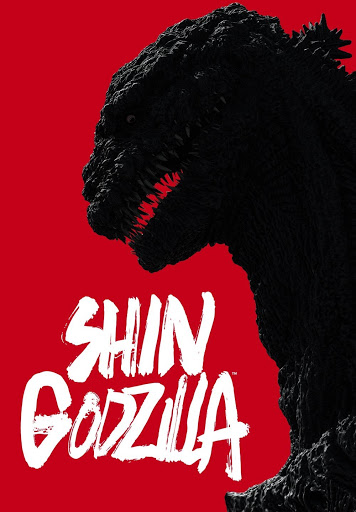“If I die in this world, who will know something of me?” This is the question asked in the song Who Will Know, played during the most shocking scene of Shin Godzilla. This scene happens in the middle of Godzilla’s attack in Tokyo, and it is also a powerful scene where we, as the audience, can see his agony. While we, as Americans, may know Godzilla as a big lizard who fights other large creatures (known as Kaijus), Godzilla represents much more than that. This is especially true in Toho Picture’s 2016 movie Shin Godzilla.
In 1954 Godzilla hit the big screen for the first time and was a massive hit with Japanese audiences. While it was indeed a big monster, rampaging and destroying cities, it was also meant to be much more. During World War II, the citizens of Japan experienced the horrific atomic bombings in Hiroshima and Nagasaki. The dropping of these bombs caused a loss of life that was (and still is) unimaginable to many people, with around 200 thousand people dying from both bombs combined. The creature of Godzilla was meant to be a representation of the atomic bombs and the destruction brought with them. In the original Godzilla, the titular character is portrayed as being vengeful and full of rage for being the way he is, which is why he goes on a rampage. This concept of a creature affected by nuclear war is expanded upon in Shin Godzilla in an equally compelling way.
Shin Godzilla is set in the modern day and focuses on the character Rando Yaguchi, who is the deputy chief cabinet secretary. Due to the main characters being a part of the Japanese government, the film is focused on the government’s response to Godzilla surfacing in Tokyo. Despite this unique focus, the destruction Godzilla brings in this movie is still felt.
One of the most prominent scenes at the beginning of the movie involves the second form of Shin Godzilla rampaging through the Kamata district of Tokyo. At this point, the audience can see what this film’s version of the iconic monster looks like, and it is horrifying. The second form of Godzilla has large, fishlike eyes that give a piercing look at the cameras. At this point in the film Godzilla has only just come onto land for the first time and has no arms and walks horizontally to the ground. The most notable part of this form of Godzilla is the fact that he appears to be bleeding at a massive rate through his gills which is disturbing to see on screen. The most interesting aspect seems to be that Godzilla does not have an end goal and is instead just wandering through Tokyo, almost running away from something.
Eventually, after being on dry land enough, Godzilla evolves into his third form in the movie. At this point, it becomes clear that there is something very wrong with Godzilla. He seems to be in agony from simply being on land. This idea is expanded upon after Godzilla retreats back into the ocean, and his origins become clear. In this film’s universe, the United States dumped massive amounts of nuclear waste into Tokyo harbor. This is a direct result of nuclear tests and weapons that had been developed at the time. The creature that will become Godzilla comes into contact with this waste and eventually becomes what the audience sees on screen. Godzilla is not a vengeful monster full of rage for the way he is. He is simply a creature in constant agony every waking moment. His existence is painful and he just wants that pain to go away. That is why he keeps attacking Tokyo.
Eventually, Godzilla comes back to Tokyo in his fourth form, which is the closest we have seen to his classic look. After the Japanese military failed to stop Godzilla from reaching Tokyo, the United States government stepped in and dropped bombs on Godzilla. This badly wounds him, resulting in the tragic sequence mentioned at the beginning of the article. As Godzilla roars in pain, he begins to glow purple. An operatic number composed for the film plays over the scene as Godzilla sets fire to Tokyo through his atomic breath, destroying everything in sight. This song is sung from Godzilla’s point of view and is about how much pain he is in, yet he still has to fight for survival. This scene makes Godzilla’s motivations clear in the movie. He is not angry or full of vengeance for the way he is; rather, he is scared and in pain and simply wants the pain to stop. Godzilla is far from the villain in this story. Despite his destructive actions, he is scared and a victim of humanity’s mistakes.
I hope this article has brought some renewed interest in this film. This is a film many have not heard about, and I hope you will give it a chance. It is a powerful film about the effects of nuclear war with a tragic monster at its core. When discussing this movie a quote from Ishiro Honda who is the director of the original Godzilla movie often comes to mind. He once said: “Monsters are tragic beings. They’re not bad [willingly]. They’re born too tall, too strong, too heavy; that’s their tragedy.” That is what Shin Godzilla is.
Credit: Toho Pictures

